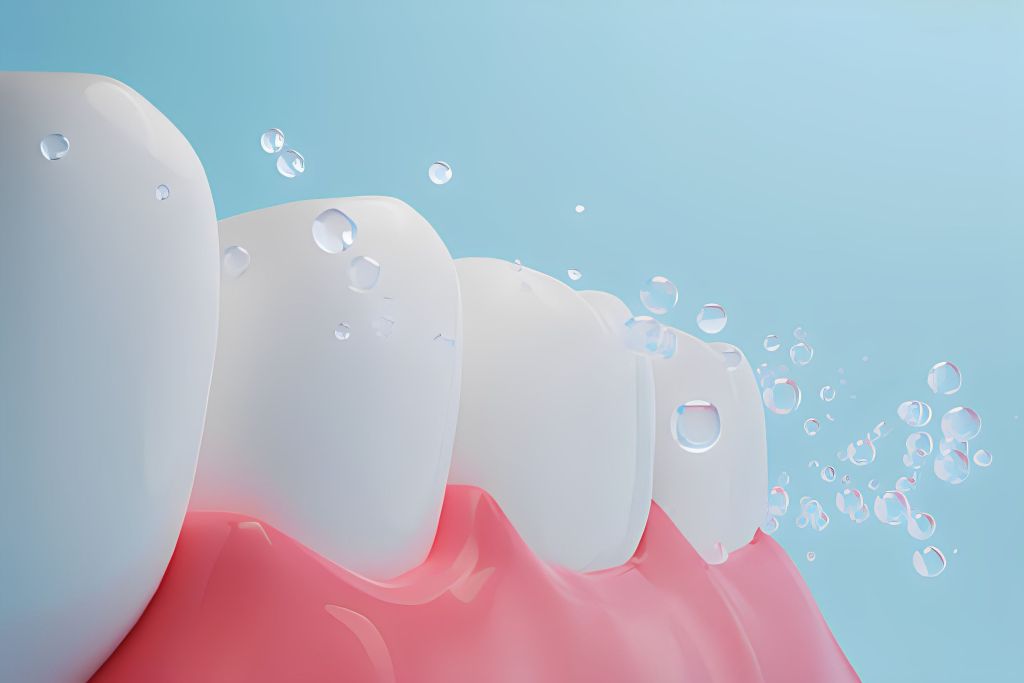Routine Care
Fluoride Treatment in Long Island City
Fluoride treatment in dentistry involves the application of fluoride, a natural mineral, to the teeth to strengthen enamel and prevent cavities. This treatment is beneficial for both children and adults, especially for those at high risk of tooth decay. Fluoride helps by remineralizing tooth surfaces, making them more resistant to acid attacks from plaque bacteria and sugars in the mouth. It’s a quick and painless procedure often performed during regular dental checkups and can be applied as a gel, foam, or varnish. Regular fluoride treatments can significantly contribute to maintaining long-term oral health.

Benefits
Fluoride treatment offers several key benefits for dental health:
Prevents Tooth Decay: Fluoride strengthens tooth enamel, making it more resistant to acid attacks from bacteria and sugars in the mouth, which can lead to cavities.
Remineralizes Teeth: It helps to repair early stages of tooth decay even before the decay becomes visible.
Reduces Sensitivity: By strengthening enamel, fluoride can help reduce the sensitivity of teeth to hot and cold.
Safe and Effective: Fluoride treatments are a safe and effective method to maintain good oral health.
Benefits for All Ages: It’s beneficial for both children and adults in preventing tooth decay and maintaining healthy teeth.
Regular fluoride treatments, as part of a comprehensive dental care routine, can significantly help in maintaining long-term oral health.
Procedure
The procedure for a professional fluoride treatment in a dental office typically includes the following steps:
Cleaning: The teeth are usually cleaned before the fluoride application to ensure that the fluoride can fully contact the tooth surfaces.
Application of Fluoride: The fluoride is applied in a high concentration as a gel, foam, varnish, or liquid solution. This can be done using a brush, tray, swab, or mouthwash, depending on the form of fluoride being used.
Setting Time: The patient is asked to sit with the fluoride on their teeth for a few minutes. During this time, it’s important not to swallow the fluoride.
Rinsing and Completion: After the required time, the patient rinses their mouth to remove any excess fluoride.
Post-Treatment Instructions: The dentist may advise the patient not to eat, drink, or smoke for at least 30 minutes after the treatment to allow the teeth to absorb the fluoride fully.
This quick and simple procedure is often done during regular dental checkups and is an effective way to strengthen teeth and prevent decay.
instructions
When providing instructions for fluoride treatment, it’s important to cover the following points:
Before the Treatment:
- No special preparation is usually required before a fluoride treatment.
During the Treatment:
- Sit still and relax while the fluoride is applied.
- Follow your dentist’s instructions on keeping your mouth open and still during the application.
After the Treatment:
- Avoid eating, drinking, smoking, or rinsing your mouth for at least 30 minutes after the treatment to allow the fluoride to fully absorb.
- Resume normal brushing and flossing after this period.
General Care:
- Continue with regular oral hygiene practices, including brushing twice a day with fluoride toothpaste and flossing daily.
- Attend regular dental check-ups for ongoing assessment and care.
Additional Notes:
- If you have any sensitivity or unusual reactions after the treatment, contact your dentist.
Following these instructions ensures the effectiveness of the fluoride treatment and contributes to better overall dental health.
Dr. Elena Cho's recommendation

As a dedicated dental professional providing fluoride treatments in Long Island City, I, Dr. Elena Cho, strongly recommend these treatments for patients looking to enhance their oral health. Fluoride treatments are a key preventive measure against tooth decay, effectively strengthening tooth enamel and reversing early signs of cavities. This simple, quick procedure is particularly beneficial for both children, who are building their oral health foundation, and adults, especially those with a history of dental caries or high risk of tooth decay. Incorporating regular fluoride treatments into your dental care regimen is a proactive step towards maintaining a healthy, resilient smile.
